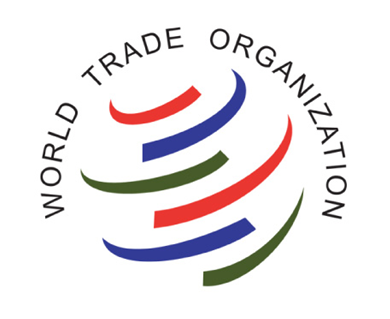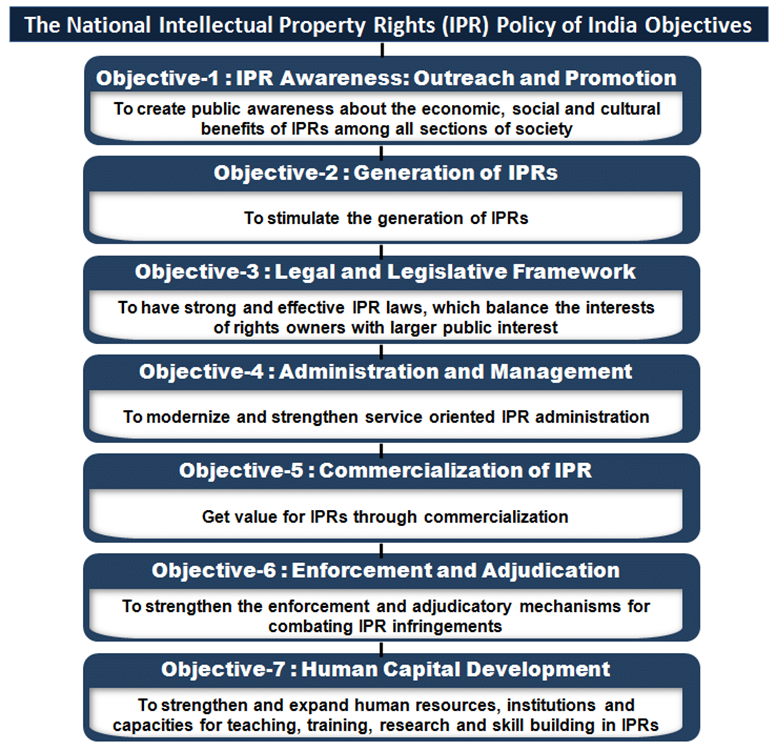- Courses
- GS Full Course 1 Year
- GS Full Course 2 Year
- GS Full Course 3 Year
- GS Full Course Till Selection
- Answer Alpha: Mains 2025 Mentorship
- MEP (Mains Enrichment Programme) Data, Facts
- Essay Target – 150+ Marks
- Online Program
- GS Recorded Course
- Polity
- Geography
- Economy
- Ancient, Medieval and Art & Culture AMAC
- Modern India, Post Independence & World History
- Environment
- Governance
- Science & Technology
- International Relations and Internal Security
- Disaster Management
- Ethics
- NCERT Current Affairs
- Indian Society and Social Issue
- NCERT- Science and Technology
- NCERT - Geography
- NCERT - Ancient History
- NCERT- World History
- NCERT Modern History
- NCERT Medieval History
- CSAT
- 5 LAYERED ARJUNA Mentorship
- Public Administration Optional
- ABOUT US
- OUR TOPPERS
- TEST SERIES
- FREE STUDY MATERIAL
- VIDEOS
- CONTACT US
Issues Relating to Intellectual Property Rights
Issues Relating to Intellectual Property Rights

Issues Relating to Intellectual Property Rights
What are IPR’s?
Intellectual Property Rights (IPR) refer to legal rights that are granted to individuals or entities over their original creative works or inventions. The aim of IPR is to protect and encourage innovation and creativity, by giving creators and inventors the exclusive right to use, exploit, and profit from their creations.
There are several types of IPR:
-
Patents: Patents provide exclusive rights to inventors for a certain period of time, usually 20 years, to prevent others from making, using, or selling their invention without their permission. This type of IPR is commonly used to protect inventions, processes, and machines.
-
Trademarks: Trademarks are symbols, logos, or names that are used to identify a company's goods or services and distinguish them from others. They provide exclusive rights to the owner to use the mark and prevent others from using a similar or identical mark.
-
Copyrights: Copyrights protect original works of authorship, such as books, music, movies, and computer software. They give the owner the exclusive right to reproduce, distribute, and display their work.
-
Trade secrets: Trade secrets protect confidential business information, such as customer lists, marketing strategies, and manufacturing processes. The owner of a trade secret can prevent others from using or disclosing the secret information without their permission.
-
Industrial designs: Industrial designs protect the visual appearance of a product or article, such as its shape, pattern, or color. They prevent others from using a similar design for commercial purposes.
-
Geographical indications: Geographical indications protect the reputation and quality of goods that are produced in a specific region, such as Champagne or Parmesan cheese. They prevent others from using the same name for products that are not produced in the same region.
-
Plant breeders' rights: Plant breeders' rights protect new varieties of plants that are created through breeding. They give the breeder exclusive rights to use, sell, or license the plant for commercial purposes.
WTO'S TRIPS agreement

The TRIPS (Trade-Related Aspects of Intellectual Property Rights) agreement is an international treaty that was negotiated under the auspices of the World Trade Organization (WTO) in 1994. The agreement sets out minimum standards for the protection and enforcement of intellectual property rights (IPR) in the member countries of the WTO.
The TRIPS agreement aims to promote and protect innovation and creativity, by establishing a framework for the protection of IPR in all fields of intellectual activity, including patents, trademarks, copyrights, industrial designs, and trade secrets.
It sets out a number of key provisions related to the following areas:
-
Standards for IPR protection: The TRIPS agreement sets out minimum standards for IPR protection and enforcement, including the types of IPR that must be protected, the duration of protection, and the scope of rights granted to IPR owners.
-
Enforcement of IPR: The agreement requires member countries to provide effective enforcement mechanisms for IPR, including civil and criminal procedures, and the ability to seek injunctions and damages.
-
Technology transfer: The agreement encourages the transfer of technology to developing countries, and requires developed countries to provide technical and financial assistance to help developing countries build their capacity to protect and enforce IPR.
-
Public health: The TRIPS agreement recognizes the importance of public health, and provides for the use of compulsory licensing and other measures to ensure that essential medicines are available at affordable prices.
Significance of IPR
-
Encourage innovation and creativity: IPR provide creators and inventors with the exclusive right to use, exploit, and profit from their creations, which encourages them to continue innovating and creating new works. This, in turn, helps to drive economic growth and development.
-
Foster economic growth and development: IPR help to create a supportive environment for innovation and creativity, which can lead to the creation of new industries and businesses, and the generation of new jobs and economic growth.
-
Protect consumers: IPR help to ensure that consumers have access to high-quality goods and services that meet certain standards of quality and safety.
-
Support international trade: IPR help to facilitate international trade and investment by providing a framework for the protection and enforcement of IPR across different countries and legal systems.
-
Preserve cultural heritage: IPR help to protect traditional knowledge and cultural expressions, such as indigenous crafts and folklore, from being exploited or misused by others.
Historical background of IPR in India
-
The history of Intellectual Property Rights (IPR) laws in India can be traced back to the colonial era. India was under British rule during this period, and the British government introduced the first modern patent law in India in 1856. This law provided for the grant of patents for new inventions and improvements for a period of 14 years.
-
After India gained independence in 1947, the Indian government enacted several laws to protect intellectual property. In 1957, the Patents Act was enacted to replace the 1911 Act. The new Act provided for the grant of patents for a period of 14 years, extendable by another 7 years.
-
The Trademarks Act was enacted in 1958 to protect trademarks and service marks in India. The Copyright Act was enacted in 1957 to protect the rights of authors and publishers of literary, dramatic, musical, and artistic works.
-
In 1970, the Indian government enacted the Patents Act to promote indigenous research and development. The new Act abolished the system of product patents and provided for the grant of process patents for a period of 7 years, extendable by another 5 years.
-
In 1999, India became a member of the World Trade Organization (WTO) and agreed to abide by the Agreement on Trade-Related Aspects of Intellectual Property Rights (TRIPS). The Indian government subsequently amended the Patents Act in 2005 to comply with the TRIPS agreement. The new Act provided for the grant of product patents for a period of 20 years, extendable by another 5 years.
-
In addition to these Acts, India has also enacted the Geographical Indications of Goods (Registration and Protection) Act, 1999, to protect the rights of producers of goods with specific geographical origins.
-
Convention for the Protection of Producers of Phonograms Against Unauthorized Duplication of Their Phonograms
-
Marrakesh Treaty to facilitate Access to Published Works by Visually Impaired Persons and Persons with Print Disabilities.
-
India is also a member of the following important WIPO-administered International Treaties and Conventions relating to IPRs.
-
Budapest Treaty on the International Recognition of the Deposit of Microorganisms for the Purposes of Patent Procedure
-
Patent Cooperation Treaty
-
Protocol Relating to the Madrid Agreement Concerning the International Registration of Marks- Madrid Protocol
-
Washington Treaty on Intellectual Property in respect of Integrated Circuits
-
Nairobi Treaty on the Protection of the Olympic Symbol
-
Paris Convention for the Protection of Industrial Property
-
Convention Establishing the World Intellectual Property Organization
-
Berne Convention for the Protection of Literary and Artistic Works
Challenges to IPR in India
-
Significant Change from Process to Product Patents: Despite the fact that India is a signatory to the TRIPS (Trade-Related Aspects of Intellectual Property Rights) agreement and a member of the World Trade Organization (WTO), the switch from process patents to product patents was made to meet the requirements of the TRIPS agreement. A product patent, as its name suggests, safeguards the final product, whereas a process patent safeguards a product's manufacturing procedure. In a developing nation like India, where IP work is a major source of monetization, this reduces monopoly in the market.
-
Section 3(d) Indian Patent Act: focuses on the issue of patents that never expire. This section is problematic because it prohibits the renewal of a product's patent for minor modifications. For the MNCs to be granted patent protection for already-issued patents, the courts require substantial "Therapeutic Efficacy."
-
Section 84 India Patent Act: One of India's major IPR issues is this Act. It manages Mandatory Permitting which urges organization proprietors holding licenses to efficiently manufacture a few medications. This is a problem because some businesses might take advantage of it and charge too much for their products. While then again, a few organizations probably won't have the option to bring adequate supplies.
-
Eliminate or Reduce Subsidies: The Indian government provides a variety of different kinds of subsidies. The term "subsidy" refers to assistance given to individuals by a state or other public entity in the form of money or services. However, the government must reduce, if not eliminate, these subsidies in order to comply with the TRIPS agreement's requirements. As a result, balancing subsidies and intellectual property rights can help India resolve some IPR issues.
-
USTR's Priority Watch List: Major IPR issues in India were brought to the attention of the United States Trade Representatives (USTR). India remains on the USTR's "Priority Watch List," along with ten other nations such as China, Indonesia, Saudi Arabia, and others.
-
Despite India's efforts to implement policy changes aimed at improving IP enforcement and protection, these well established provokes make US business in India to languish as it makes troublesome over trend-setters to get and keep up with licenses in the country.
-
Additionally, information regarding state-issued pharmaceutical manufacturing licenses is opaque. According to the report, certain agricultural chemical products are not protected from unfair commercial use or disclosure.
Reforms needed in IPR regime in India
-
Indian researchers/innovators needed to be made aware of basic precautions that are to be exercised. Ip education was needed to be ramped up across the country, and the feasibility of introducing this in schools had to be explored.
-
Incentives for generation of IPRs incentives were needed to encourage the MSMEs, startups, talented scientists and engineers to create IP.
-
Need for facilitating grassroot innovations
-
Need for better enforcement and adjudication of IPRs need for reducing pendency and strengthening institutional mechanism
-
Streamlining IP procurement & prosecution - transparency & efficiency by digitization, modernization and integration of the intellectual property offices in the country.
-
Need for augmenting international collaborations and understanding best practices in the field.
Steps taken for Indian IPR Regime
-
Digitization of IP System and Offices: Switching to electronic filing & processing; incentivizing e-filings; implementation of electronic mode of communication.
-
Promotion IP Education: Four new NIDs (National Institute of Design) have been set-up and all NIDs have been given INI (Institute of National Importance) status. Inclusion of IPR content in NCERT curriculum
-
Establishment of CIPAM: Established as a professional body under the aegis of the DPIIT to ensure focused action on issues related to IPRs and address the objectives of the policy.
-
International Collaborations: Harmonising India’s IP system with International agreements and classification model. Executing MoUs on IP Cooperation for sharing of best practices and exchange of information with IP administration of countries like Japan, US, Denmark, Sweden etc.
National IPR Policy, 2016
The Department for Promotion of Industry and Internal Trade (DPIIT) under the Ministry of Commerce adopted the National Intellectual Property Rights (IPR) Policy in 2016. The main goal of the policy is "Creative India; Innovative India".
DPIIT is the nodal department for IPR development in India and the Cell for IPR Promotion & Management (CIPAM) under DPIIT is the single point of reference for implementing the policy.
Objectives
-
IPR Awareness: Outreach and promotion are important to create public awareness about the economic, social and cultural benefits of IPRs among all sections of society.
-
Generation of IPRs: To stimulate the generation of IPRs.
-
Legal and Legislative Framework: To have strong and effective IPR laws, which balance the interests of rights owners with larger public interest.
-
Administration and Management: To modernise and strengthen service-oriented IPR administration.
-
Commercialisation of IPRs: Get value for IPRs through commercialisation.
-
Enforcement and Adjudication: To strengthen the enforcement and adjudicatory mechanisms for combating IPR infringements.
-
Human Capital Development: To strengthen and expand human resources, institutions and capacities for teaching, training, research and skill building in IPRs.
Achievements of the policy
-
Strengthening of Institutional Mechanism: The administration of Copyright Act, 1957 and Semiconductor Integrated Circuits Layout-Design Act, 2000 has been transferred to Department of Industrial Policy and Promotion. This has enabled an integrated approach and synergy between different IP offices and Acts. Under the Finance Act 2017, the Copyright Board has also been merged with the Intellectual Property Appellate Board (IPAB).
-
Clearing Backlog/ Reducing Pendency: The patent applications pending for examination have reduced from 1,97,934 as on 31.3.2016 to 1,39,274 as on 31.10.2018. As regards trademarks, the number has come down from 2,59,668 to 32,619 in the same period. Automatic issuance of electronically generated patent and trademark certificates has been introduced.
-
Increase in Filings: Patent filings have increased by nearly 7% in the first 8 months of 2018-19 vis-à-vis the corresponding period of 2017-18. Trademark filings have increased by nearly 28% in this duration.
-
IP Process Re-engineering: Patent Rules, 2003 has been amended to streamline processes and make them more user friendly. Expedited Examination of patents is now permitted on certain grounds. In fact, the shortest time taken to grant a patent recently has been just 81 days from the filing of the request for examination. Totally revamped Trade Marks Rules, 2017 have been notified on 6th March, 2017.
-
India has acceded to the WIPO Copyright Treaty (WCT) and WIPO Performances and Phonograms Treaty (WPPT), which extend coverage of copyright to the internet and digital environment.
-
Creating IPR Awareness: IPR Awareness programs have been conducted in over 200 academic institutions, including rural schools through satellite communication, and for industry, police, customs and judiciary.
-
IPRs in School Syllabus: Content on IPRs has been included in the NCERT curriculum of Commerce stream.
-
Technology and Innovation Support Centres (TISCs): In conjunction with WIPO, 6 TISCs have been established in various institutions across different states.
-
Global Innovation Index (GII): India’s rank in the GII Report issued by WIPO has improved from 81st in 2015 to 40th place in 2022.
-
IPR Enforcement Toolkit for Police: A IPR Enforcement Toolkit have been prepared to assist police officials in dealing with IP crimes, in particular, Trademark counterfeiting and Copyright piracy.
Conclusion
Protecting IPRs can be a tough proposition in India, where awareness is low and enforcement weak. But protecting patents, trademarks and copyrights are vital for innovation and development. However, even with rapid progress on the industrial, scientific and economic front, we lag behind countries like China. Good IPR protection will foster a culture of creativity and innovation that could help us close that soon.




